Photographer Sukhdip Purewal Boparai celebrates Women’s History Month through her “Revolutionary Portrait Project” (#revolutionary portrait project). Here, she revives the legacy of historical and revolutionary Sikh/Punjabi women through portraiture of contemporary women living in the US diaspora today. She sat down with Kaur Life to talk about her project.
What inspired you to do this project?
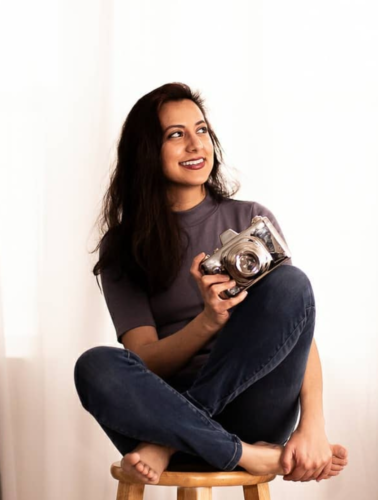
I was (and am) a new mother working and parenting through the pandemic, without access to the resources or support I would usually have. I gained a new identity as a mother but also felt like I was losing myself. One way to find myself was to get back into photography, but I wasn’t happy with some of the work I was doing because I felt like I didn’t have creative control over the photoshoots – I was producing what others wanted. This project was in response to re-discover myself as a person, a mother, and as a photographer, and even to find community. In many ways these portraits, and these women – from the past and the present – are reflective of many parts of my identity. And the beauty is that this project, despite the loneliness of the pandemic and motherhood, is that I felt connection. At the end of the project, I learned a lot more about myself, my family’s history, and increased my community of creators.
How did you pick these historical women?
I’ve always been interested in Sikh/Punjabi history and I’ve done research over time – from when I was a college student, up to when I was researching a name for my soon-to-be daughter. More recently, I came across articles – including one published by Kaur Life. All the women I read about are inspiring. I selected women who could easily be replicated through portraiture and could be recognizable.
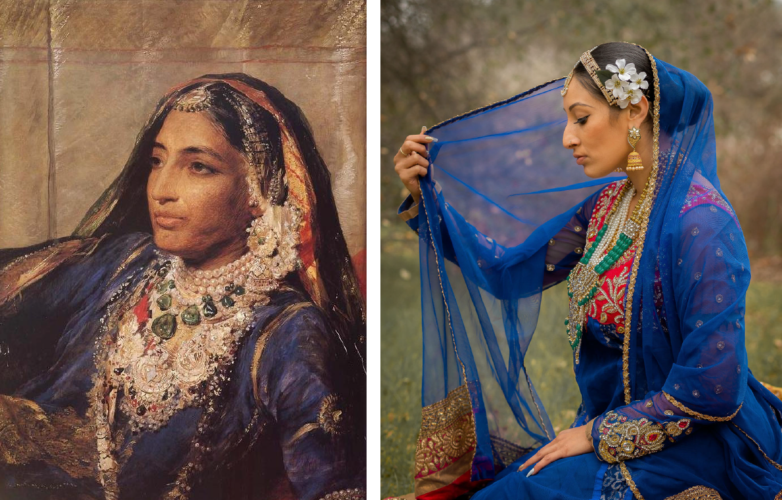
What elements or characteristics of these women do you admire?
I admire these women for following their instincts and living by their values. They did what they felt and knew was right, whether that was what was right for the liberation of their people, or the liberation of their own soul and being by following a passion or dream. And they pursued it, often by breaking gender and class norms.
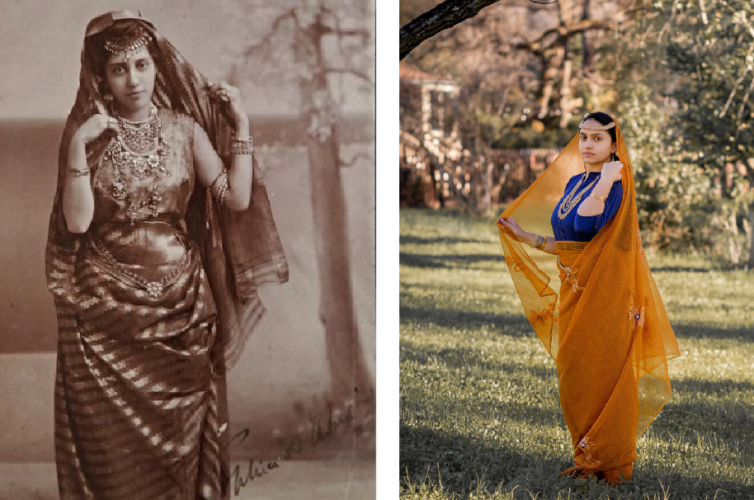
Were there any Sikh values you were trying to showcase?
I wasn’t intentionally trying to showcase a particular Sikh value. Because I was raised with Sikh values and I identify as Sikh, these values inherently show up in how I try to navigate my life and my relationships. These values include: integrity, compassion, and humility. I sought to do this project in a way to be respectful, authentic of the revolutionary women in the past and to the women who modeled after them.
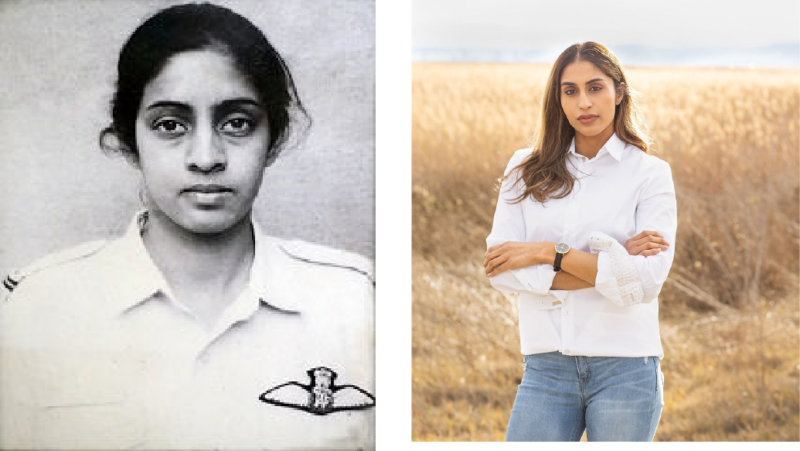
How did you pick the models? Do you have a personal connection with them?
I knew most of the models. I worked with some of them before through collaborative photoshoots. One I know through family. And one I met online – I posted a request in a photography/model forum. I really appreciate the models. I couldn’t have done this project without them.
What was their response to being part of the project?
The initial responses were mixed. Some models were really excited – they did research on the revolutionary women and were grateful to be involved. Some were unsure and skeptical about the purpose of the project but went along with it. It makes sense, this was all in my head and I didn’t have examples to share. So my models really had to put their faith in me.
Finding models was really laborious – some weren’t into the concept because it wasn’t “glammy”, I didn’t bring in a makeup artist and that was intentional. The goal was to keep the portraits authentic. I wasn’t trying to glamorize or romanticize these revolutionary women, but to emulate a mood or emotion. Some models I reached out to were critical of some of the revolutionary figures. This is a whole different topic. In some cases models judged these women for the same reason I was portraying them: they lived their own life and rebelled against patriarchy. Ultimately, I was and am really grateful for the group of women I ended up working with.

Take us through the creation of one photo. From outfits, to lighting, to composition – what are the steps?
I spent a considerable amount of time studying each original portrait including the main elements of it without getting carried away with creating a complete replica. I created a Google Doc of each revolutionary figure with instructions around what I’m looking for, including what the model would wear, the pose(s), the setting. I wanted to make this really straightforward and easy for my models and gathered most of the accessories and props on my own.
I’ll use Maharani Jind Kaur as an example. Jind Kaur is wearing a beautiful royal blue outfit and is adorned in beautiful jewelry. It turned out my model, India, had a suit that same color, so I asked India to wear her outfit, and to keep the makeup light. I gathered jewelry, searching through my stash and my mom’s (my mom is definitely the fashionista between us, so I had options). And I borrowed some jewelry from my cousin as well. In the original photo, it’s hard to tell what Jind Kaur’s background is. I brought in my own aesthetic overall – I photograph in nature with natural lighting and depth of field. It was an overcast day with enough lighting. I asked India to pose and look on ahead, as Jind Kaur was doing and I primarily photographed the profile of India from different angles. What I absolutely love about the photos of India is her striking features. She has all the makings of Jind Kaur – rich brown skin, a fierce nose, a strong gaze, and a sense of assuredness and confidence.
What do you hope viewers will take away from this project?
I hope the young people in the Sikh/Punjabi community learn about our history, especially about the role and valuable contributions of women. We are more than mothers, sisters, daughters, and wives. I also hope that today’s women see themselves through the revolutionary women. The fact that we are alive today, as descendants of our people given everything, every injustice our people have gone through to just be able to exist and practice our faith and our choices, is in itself revolutionary.
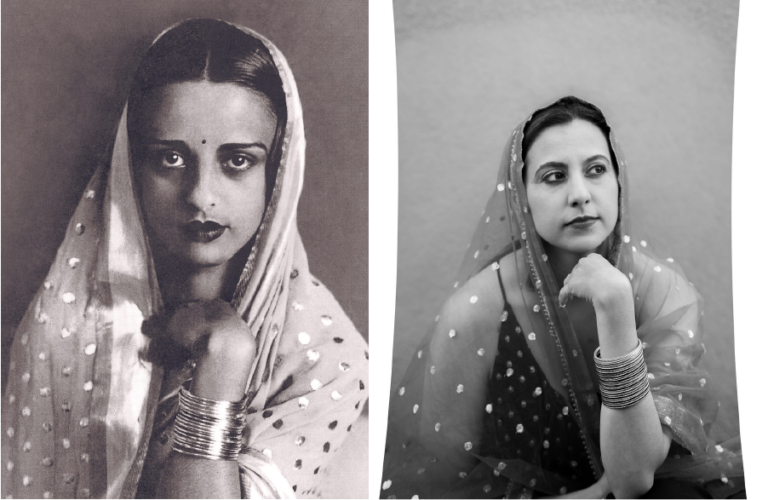
Is there anything you can share with us about the history of photography and how it is used (past or present) in shaping how people view themselves and their peoplehood?
For a long time photography was only accessible to wealthy people. Now, we all have the opportunity to visually document our lives and ideas. One aspect of photography that I’m committed to changing is increasing representation of all people who don’t fit trends or molds. I see a lot of trends that are rooted in cultural appropriation or are just that – they’re trends. There isn’t a lot of depth or authenticity about them. I don’t want to take pretty pictures, I want to show stories about who people really are and what’s important to them.
As a photographer yourself, do you feel a pull towards sharing the visual stories of underrepresented people?
I do. I’m tired of seeing the same type of people take up space. And I’m tired of seeing photographers tokenize people who are poor, and Black and Brown people as a trend or to market themselves to diverse communities for the purpose of profit. We should be collaborators in our experience. As a researcher who is well aware of inhumane and unethical research practices of vulnerable populations, this concept of “participatory research” is ingrained in me as an artist too. I love to hear what people I shoot with are thinking and feeling – how can we work in partnership to make this experience and resulting photograph a reflection of who you are? Being in front of a camera is harder than being behind it. It can be really vulnerable. You need to trust the photographer, and often, we trust people who share our experiences and values. So it’s really important to increase representation among photographers too.
Which historical Sikh women do you hope to feature in the future?
I want to feature our warrior Kaurs. I’ve been careful about this pursuit because I want to do this in the utmost respectful manner. Our Gurus and Sikhi are against idol worship; the Gurus themselves discouraged images of them to be revered in any way. In this light, I believe warrior Kaurs should be respected similarly. I hope people don’t think my portraiture of our warrior Kaurs is worship – it’s appreciation. This is why I’ve been trying to figure out how to portray the Warrior Kaurs in an especially respectful way.
So I’ve been thinking about new and different creative ways to honor our women warriors. I’m hoping this platform can connect me to people who are interested in collaborating. I imagine there are many more women in our history whose stories haven’t been documented. I’d like to think of a way to honor them too.
Do you have any advice for Kaurs who wish to be professional photographers?
I feel honored that you’re asking me this question, because I’m only getting started myself. I think any Kaur who wants to pursue photography intentionally should invest in a lot of reflection about who they are and what it is they want to convey. The best inspiration comes internally, not from Pinterest or other photographers. Anything that you create is unique because it is yours. But in order for it to be yours, you need to get to know yourself or start the journey to get to know yourself – and this is understandably a messy and perpetual process as humans going and growing through life. My own current journey started with motherhood and the pandemic.
If you’d like to reach out to Sukhdip and book a photoshoot, you can contact her at: portraiturebysukh@gmail.com
Photos by Sukhdip Purewal Boparai All rights reserved. Photos cannot be copied, shared, duplicated, altered, or used without the express consent of the photographer.

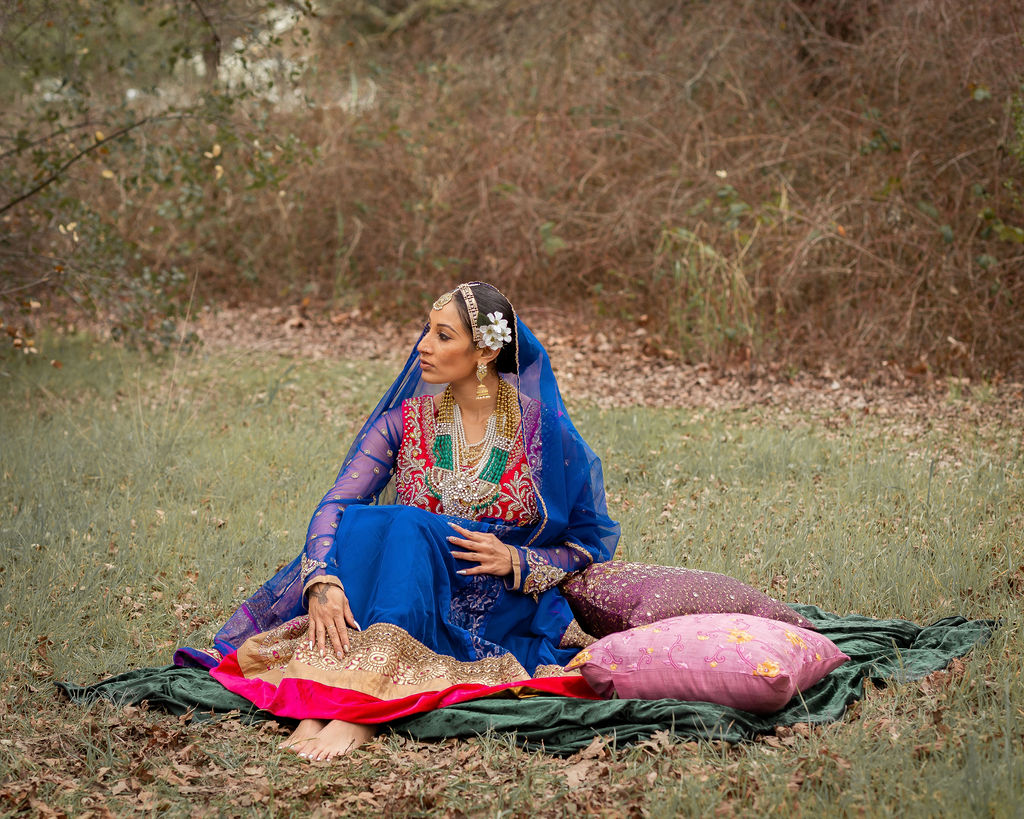
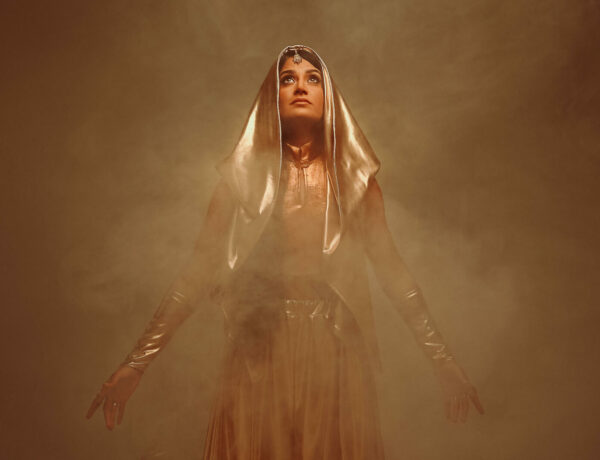


1 Comment
Baljit Singh Sekhon
09/18/2022 at 10:01 amSSA ji
Nice work.
Baljit Singh Sekhon
Joint Secretary,
Youth Affairs & Sports
Association of Indian Universities
New Delhi India